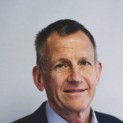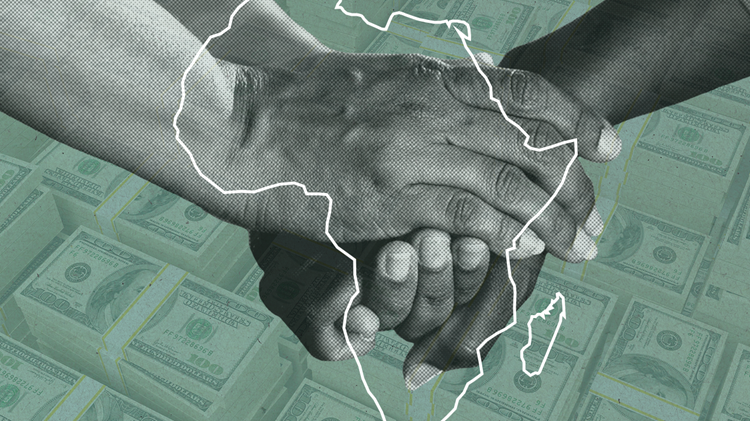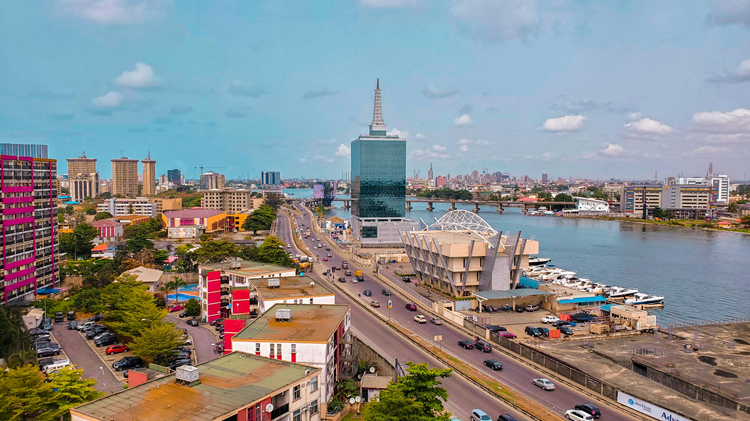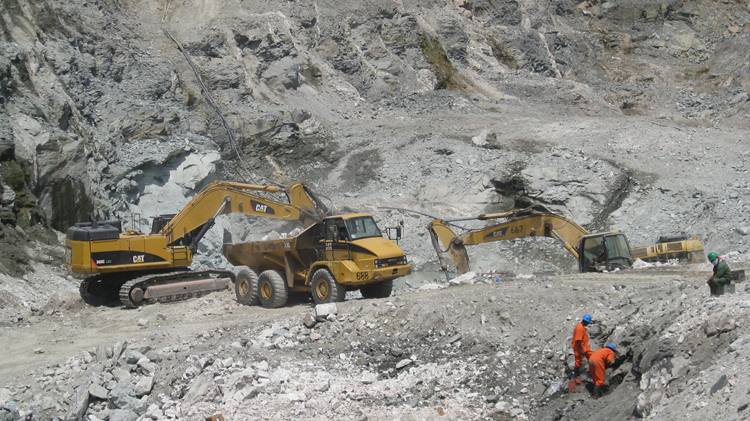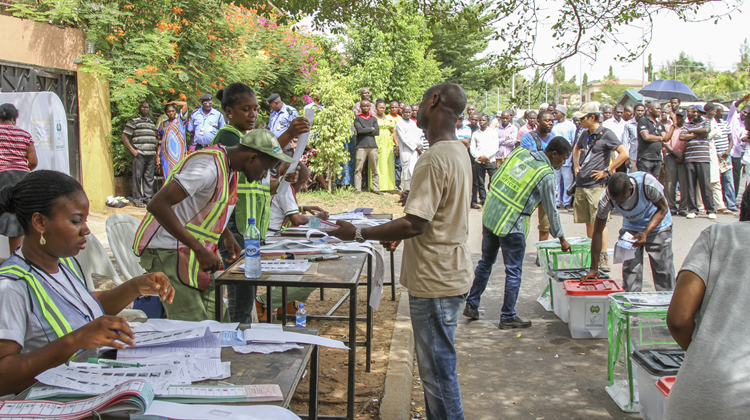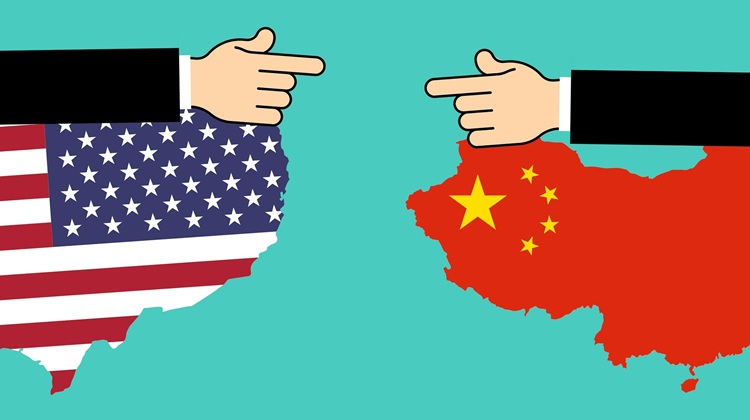Africa’s growth prospects: stagnant and under pressure

The continent must tackle inequality, governance gaps and environmental challenges to unlock its potential.
Africa’s growth prospects are stagnating and have declined in recent years, as evidenced by slow GDP growth rates and limited improvements in human development indices. This downward trend is reflected in the revised and updated analysis of our Current Path forecast on the African Futures website published in December 2024. It underscores the urgent need for transformative action, which is also reflected in the January 2025 special report on Africa, The Economist, which extensively draws on our associated work.
Global tensions, including the Russia-Ukraine war and shifting dynamics with China, compound the continent's challenges. Simultaneously, internal pressures like rapid population growth and migration intensify socio-economic strains, highlighting systemic vulnerabilities.
Africa’s economic growth remains uneven and fragile. Instead of improving, global tensions mean that prospects are now more modest and likely to decline even further under the imminent presidency of Donald Trump in the US. Much of the continent’s progress is anchored in extractive industries and agriculture, sectors that provide limited opportunities for value addition, as seen in countries like Angola and Nigeria where oil dependency has hampered diversification. This lack of structural transformation inhibits the diversification of economies into higher-value sectors such as manufacturing and technology. Without significant policy shifts to promote industrialisation, Africa risks remaining reliant on volatile international commodity markets, which offer limited potential for sustainable and inclusive growth.
Africa’s population is projected to increase by almost 60% by 2050, creating immense pressure on infrastructure, education and the job markets. The continent’s youth, the largest portion of Africa’s population, face high unemployment and underemployment rates. Their response is increasingly violent. Economic systems have not adapted to absorb this growing labour force, perpetuating cycles of poverty and disenfranchisement, with youth unemployment rates exceeding 30% in several regions. Migration, both within and beyond Africa, has become a desperate response for many.
Poverty and inequality remain pervasive across Africa, undermining progress toward development goals, with almost 440 million people still living below the international extreme poverty line of US$2.15 per person per day. Access to essential services such as education, healthcare and infrastructure is uneven, particularly in rural and marginalised communities. These disparities exacerbate social tensions and limit opportunities for millions, perpetuating cycles of deprivation and exclusion.
Climate change, deforestation and land degradation strain Africa’s natural resources. Water scarcity and food insecurity are critical concerns, particularly in regions already vulnerable to extreme weather events. These environmental pressures compound socio-economic challenges and threaten livelihoods.
Weak governance and poorly implemented policies hinder Africa’s ability to address its challenges effectively. Corruption and inefficient institutions further erode public trust and limit the impact of development initiatives, reflected in the findings from Afrobarometer, among others. Without determined action to unlock more rapid economic growth, the continent risks entrenching existing disparities and missing opportunities for transformative change.
Without determined action to unlock more rapid economic growth, the continent risks entrenching existing disparities and missing opportunities
AFI’s Current Path analysis offers a sobering reflection of Africa’s likely trajectory. Using the International Futures forecasting platform (University of Denver), Africa’s average growth forecast for the next two decades is modest, at 4.5%. That would deliver an African economy which, in 2045, would be more than double its current size. Yet, with an average population growth of 2% per year, incomes will grow slowly - improving at a modest average of only 1.3% per annum. As a result, poverty, which is currently increasing, should only marginally decline (to 393 million people) in absolute numbers.
The need for new thinking
We subsequently use the Current Path analysis as a baseline and then model how ambitious improvements in eight sectors, such as in the healthcare sector, agriculture, manufacturing, governance and inward financial flows, could change Africa’s development prospects. In the months ahead, the AFI team will again update a number of these sectoral themes to provide timely insights and actionable pathways as well as the implications on jobs, Africa’s role in the global energy transition and the effects of climate change. Working in support of AUDA-NEPAD, our analysis is done at a country level and then aggregated to regions and regional economic communities and engages with African governments, regional organisations and partners to support transformational change.
Africa’s challenges are significant, yet they are not insurmountable. The continent has large opportunities to transform its future. Economic diversification through initiatives like the African Continental Free Trade Area (AfCFTA) can reduce reliance on volatile commodities, boost intra-African trade and foster resilience. Investments in renewable energy and digital infrastructure can drive growth, particularly by tapping into the potential of Africa’s tech-savvy youth. Addressing the annual infrastructure gap of US$100 billion is crucial for competitiveness and unlocking transformative prospects for sustainable development.
Africa’s challenges are significant, yet they are not insurmountable
At the heart of change is the need to improve governance, particularly effectiveness and accountability, reduce corruption to attract investments and help one another to achieve stability. Better financial management can bridge funding gaps, supporting growth across sectors by prioritising transparent budgeting and reducing illicit financial flows. Investing in human capital through health, education and skills development will empower Africa’s youthful population to become a demographic dividend rather than a demographic challenge. These efforts, combined with strategic environmental management, position Africa to overcome its current trajectory and build a more inclusive and sustainable future.
To do that we need to understand and then work to change Africa’s mediocre Current Path.
Image: _Mukula/Pixabay
